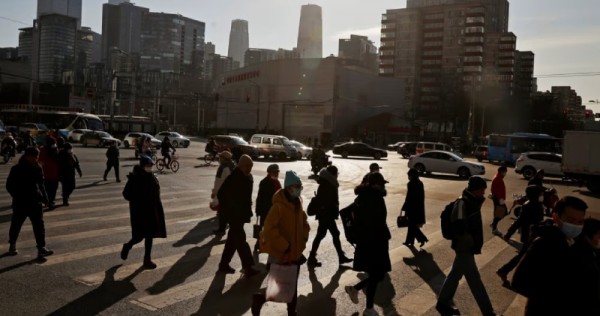China lags behind the United States, South Korea, Japan and Singapore in terms of globally competitive talent and faces stiff rivalry from other major economies in retaining experts in artificial intelligence (AI), according to a new report.
China ranks eighth in the world in terms of “talent competitiveness”, with the US topping the rankings and South Korea at No 2, according to the Global Talent Flow: Trend and Prospect report published by the Centre for China & Globalisation on Monday (Nov 7).
The indicator took into account a range of factors, including size of each country’s talent pool, the number of scientific researchers, and spending on research and development (R&D), among others.
The report highlighted significant weaknesses in the effectiveness and quality of Chinese talent – a blow to Beijing’s goals of turning the country into a hub for top-tier professionals and achieving technological independence .
China ranked in the bottom third of 38 countries in terms of talent quality, an indicator that measures the educational attainment of the workforce and the proportion of scientific researchers. India was one spot ahead while Singapore and South Korea ranked first and second globally.
In terms of talent effectiveness, which is based on labour productivity, the number of active patents per capita and the share of technology manufacturing, China was not much better at 26th on the rankings. Singapore was again at No 1.
“This shows there are still barriers in China that hinder talent from making full use of its potential,” the report said.
China is determined to nurture its technological know-how amid heightened tensions with the US, which has curbed the country’s access to hi-tech components.
At China’s recently concluded 20th party congress, President Xi Jinping outlined plans to turn the nation into a centre of global talent.
Bolstering global competitiveness is critical for China’s sustainable economic development, especially when the digital economy and AI are becoming new engines for growth.
But the world’s second largest economy faces a shortage of more than 5 million skilled workers and researchers in the AI industry, the report said, a number that will exceed 10 million by 2025. The country’s talent supply to demand ratio in the sector was 1:10, the report added.
China’s top-tier AI talent is only 20 per cent of the size of the US, said Wang Hong, president of China Europe International Business School, at a talent conference in December last year, according to the Shanghai Observer.
In last year’s 14th five-year plan for 2021-25, China vowed to cultivate more top scientists and engineers to lead innovation.
R&D investment rose 14.2 per cent to 2.78 trillion yuan (S$539 billion) last year and Xi’s 20th party congress report said the country has the largest number of R&D workers in the world.
But China faces strong international competition, especially from its geopolitical rival the US.
Washington has launched a series of policies this year to attract global talent, adding 22 new areas of study to the STEM Optional Practical Training (OPT) programme and easing visa approvals in the field science, technology, engineering, and mathematics (STEM).
More than two-thirds of researchers in the STEM field in the US received their undergraduate degrees in other countries, according to The Global AI Talent Tracker by MacroPolo, the Paulson Institute’s think tank.
China is the main contributor of foreign STEM talent to the US, with 29 per cent of these researchers having received undergraduate degrees in China but over half of them going on to study, work and live in America.
Japan has set a target of bringing in 20,000 highly skilled workers by the end of 2022, while shortening the number of years required for permanent residency.
In August, Singapore introduced the Overseas Networks & Expertise Pass, a five-year visa for foreign professionals, and shortened the approval time from about three weeks to 10 days.
This article was first published in Asia One . All contents and images are copyright to their respective owners and sources.











